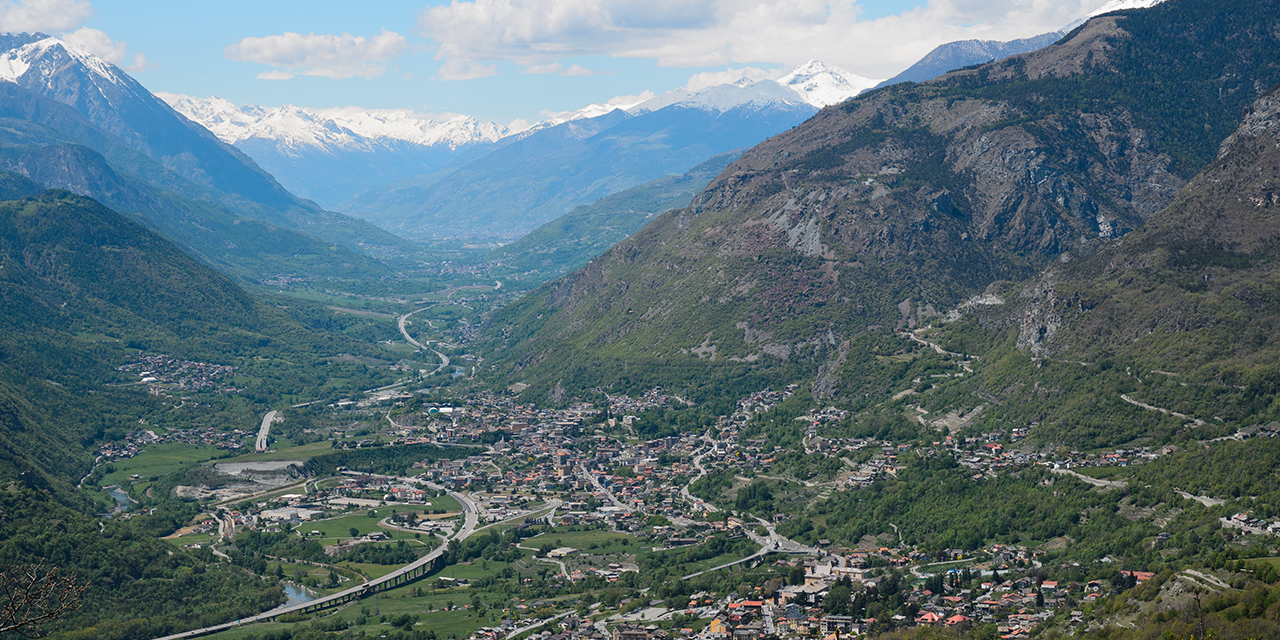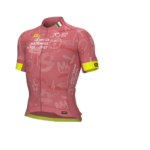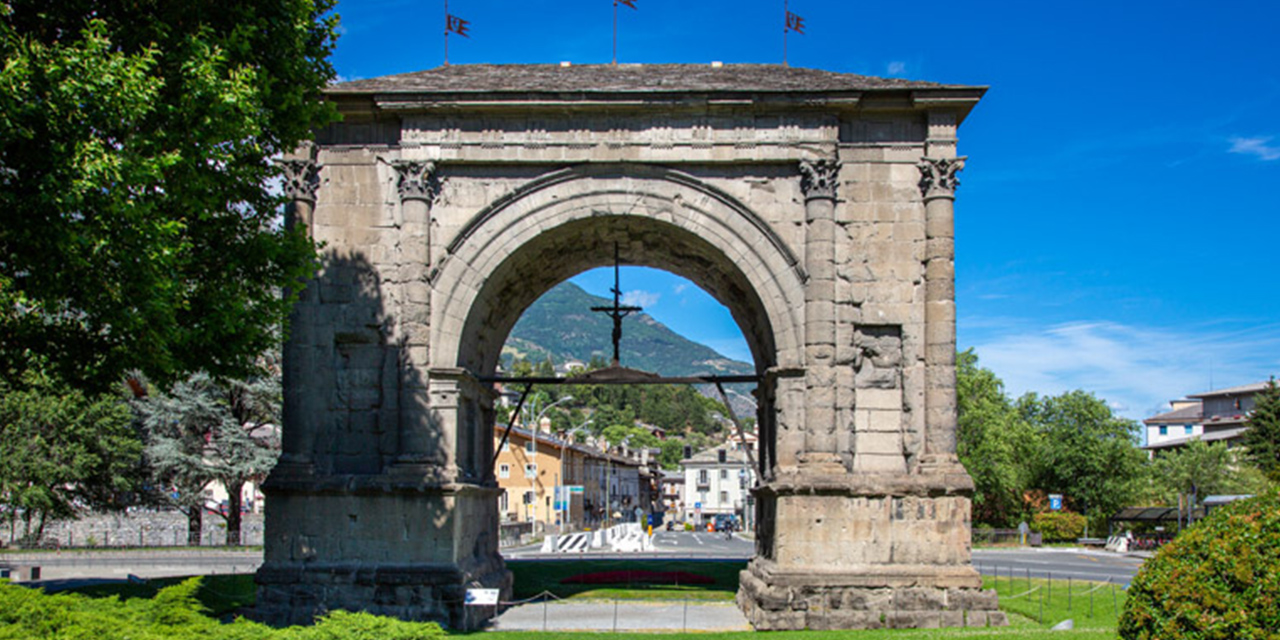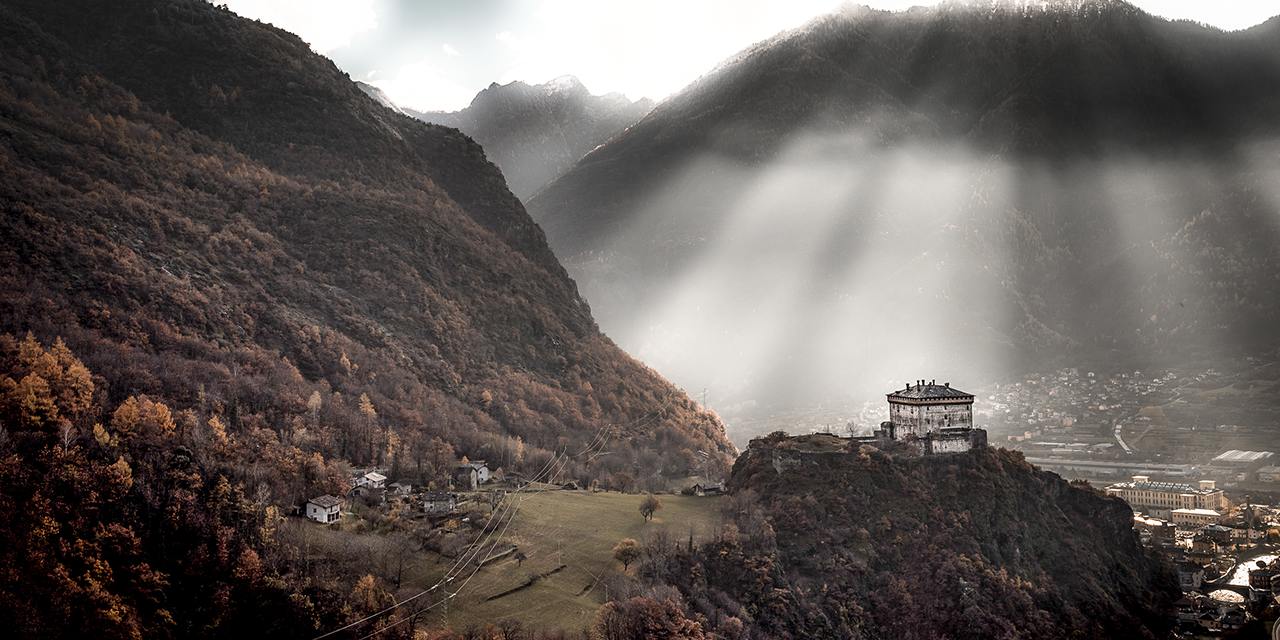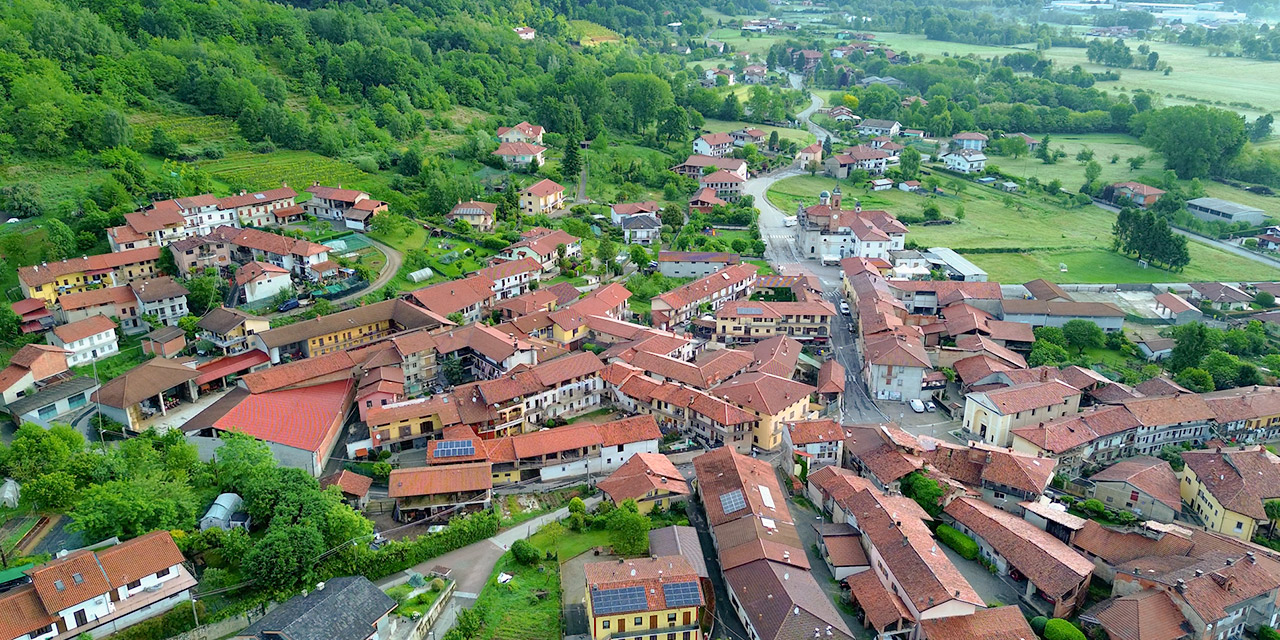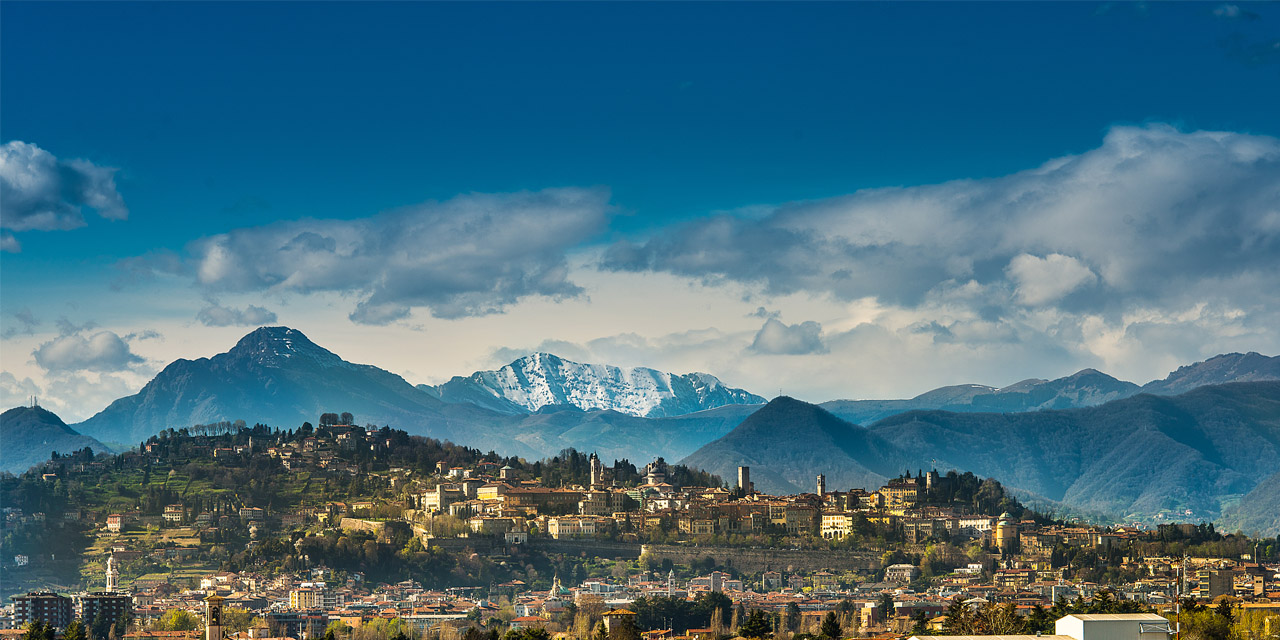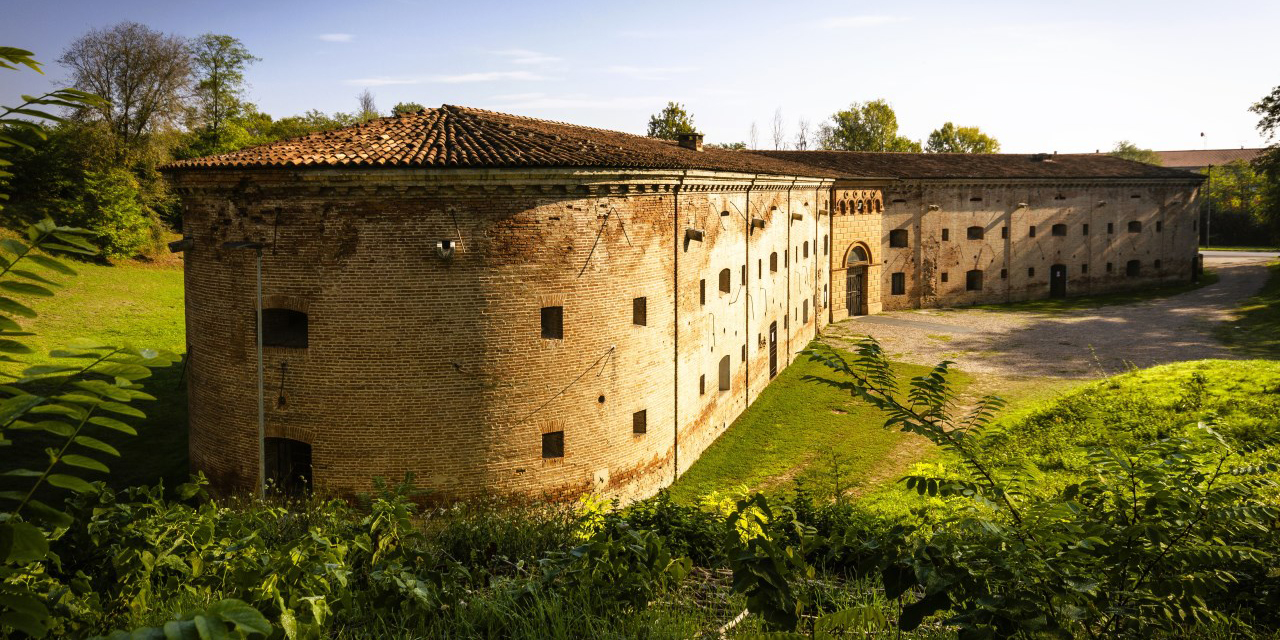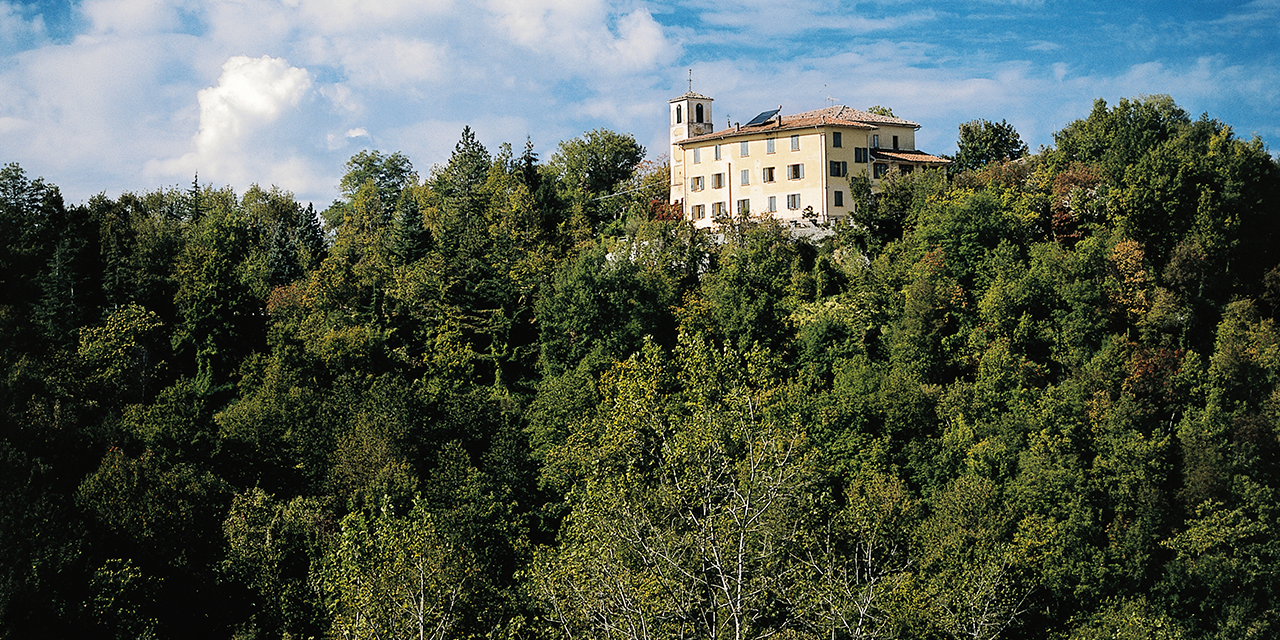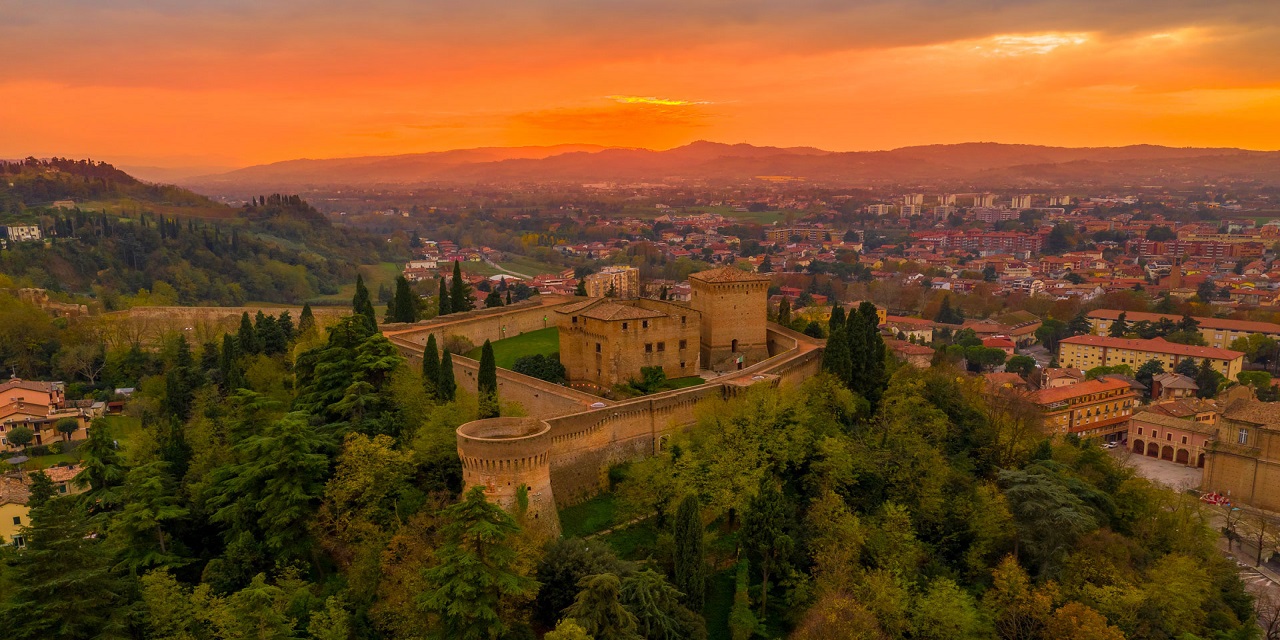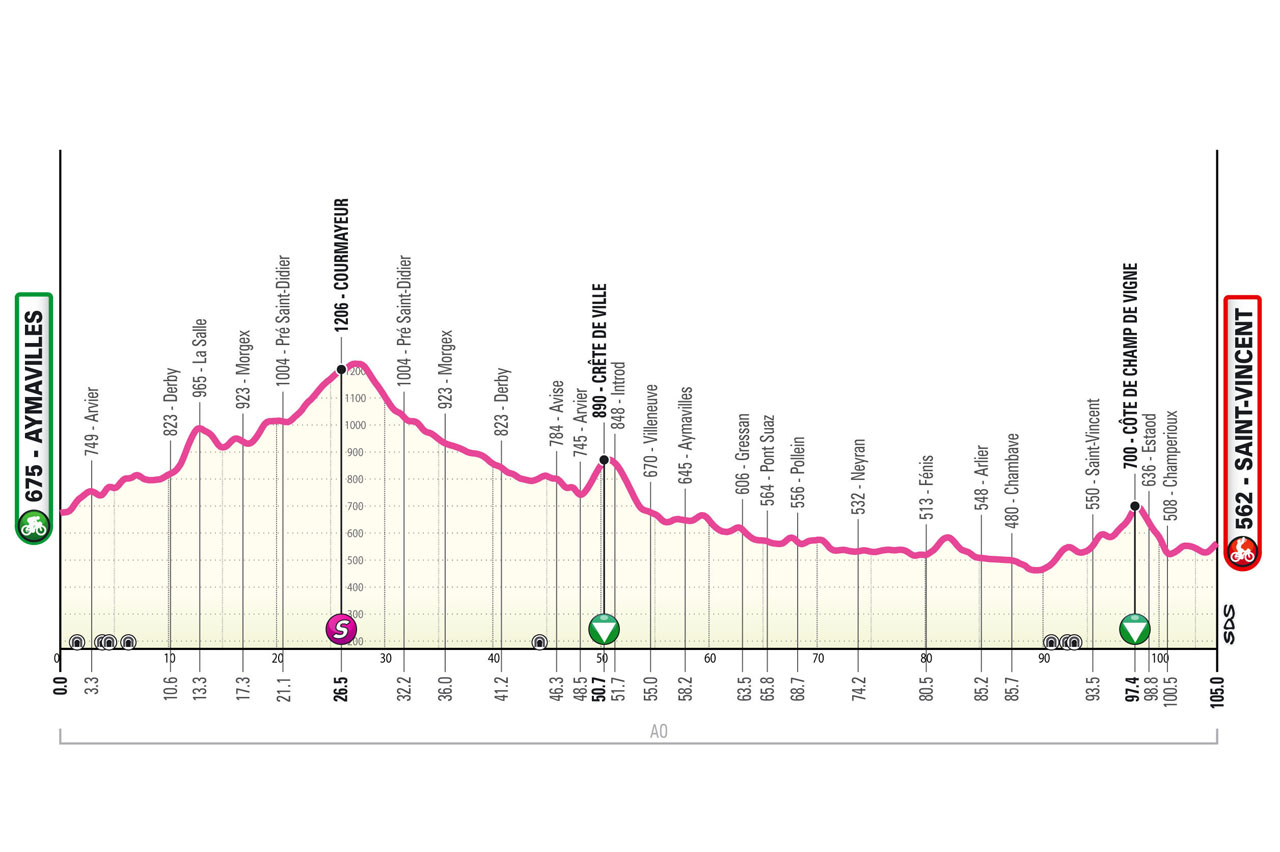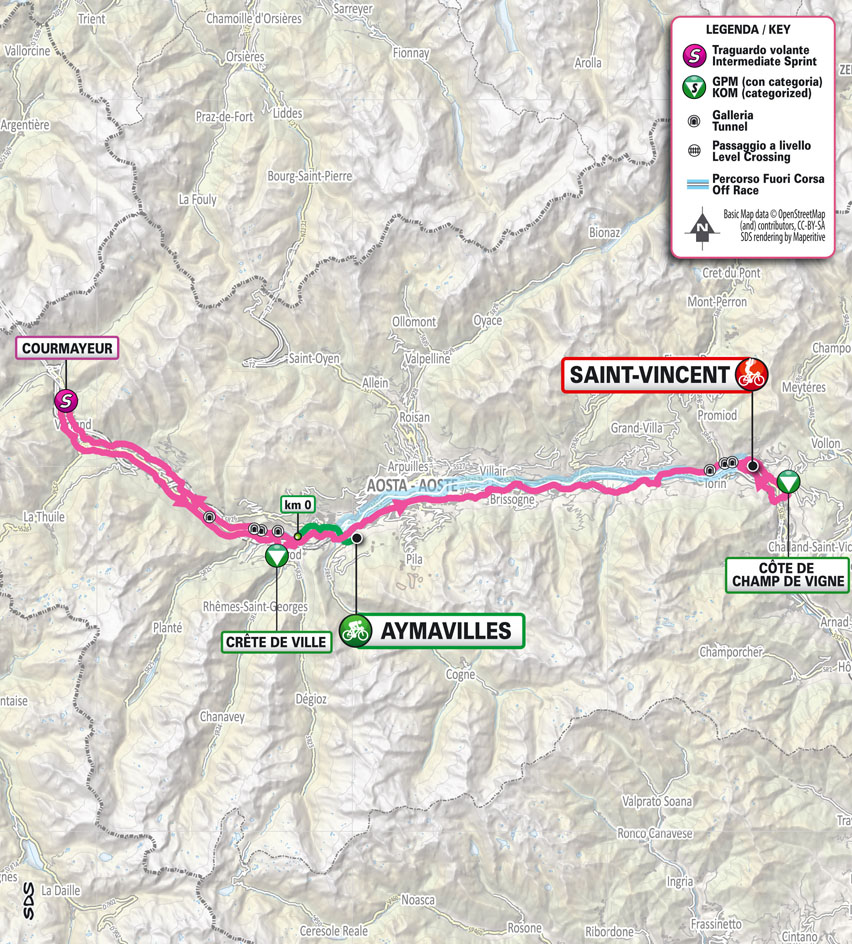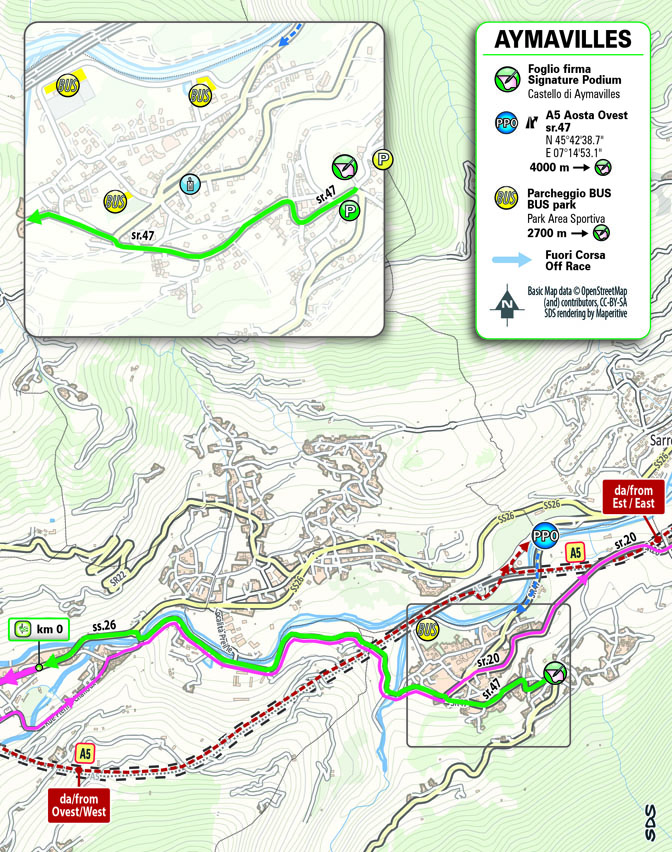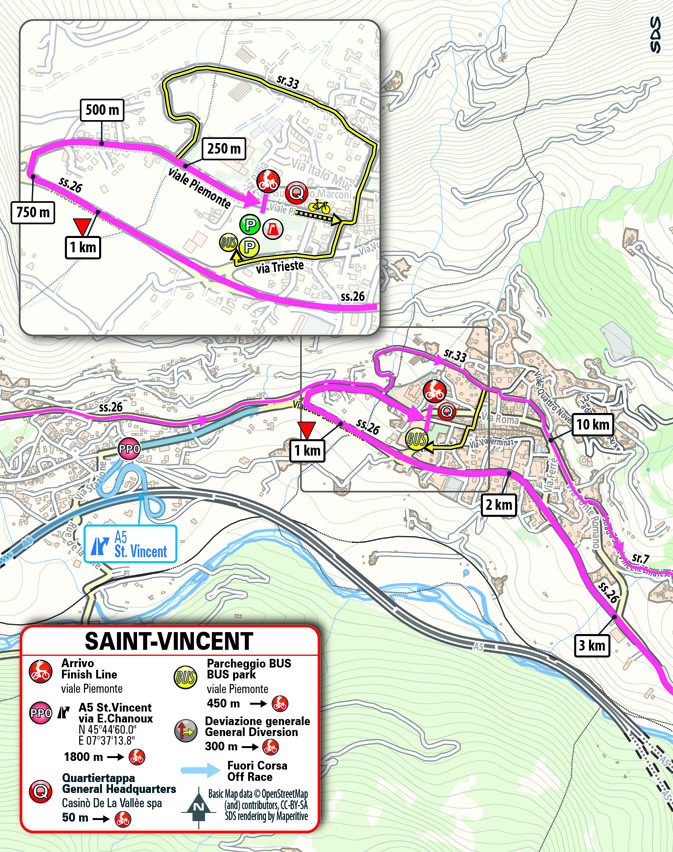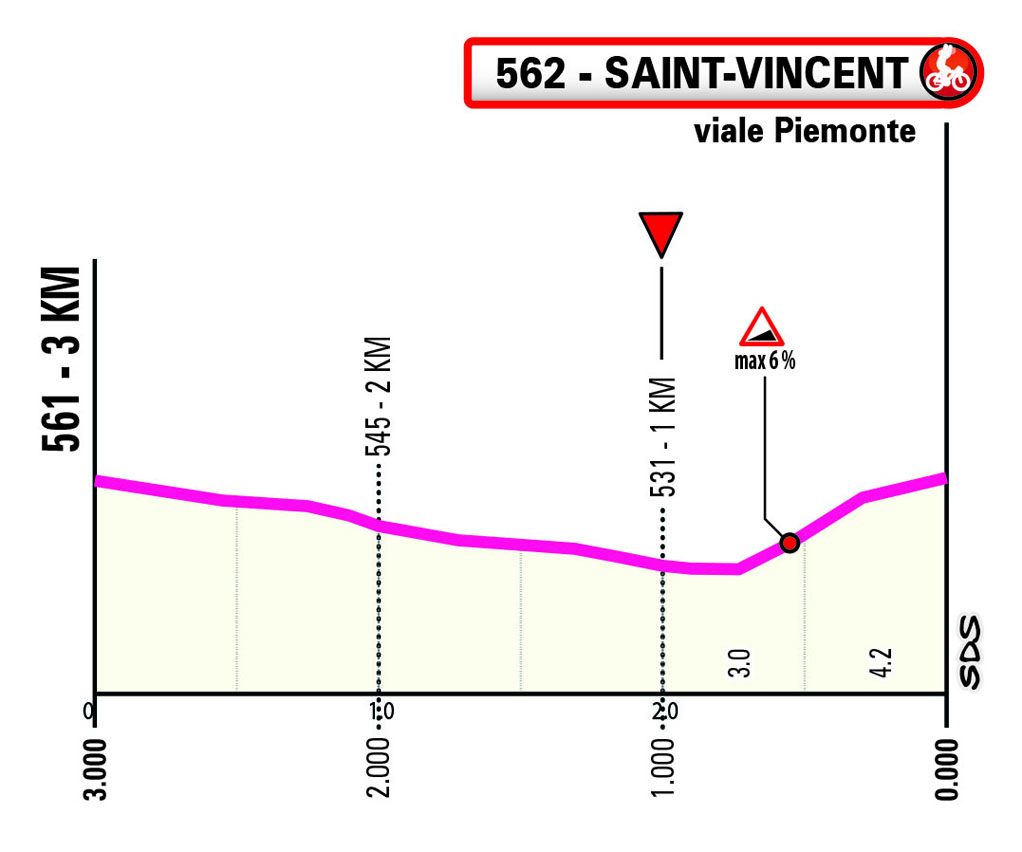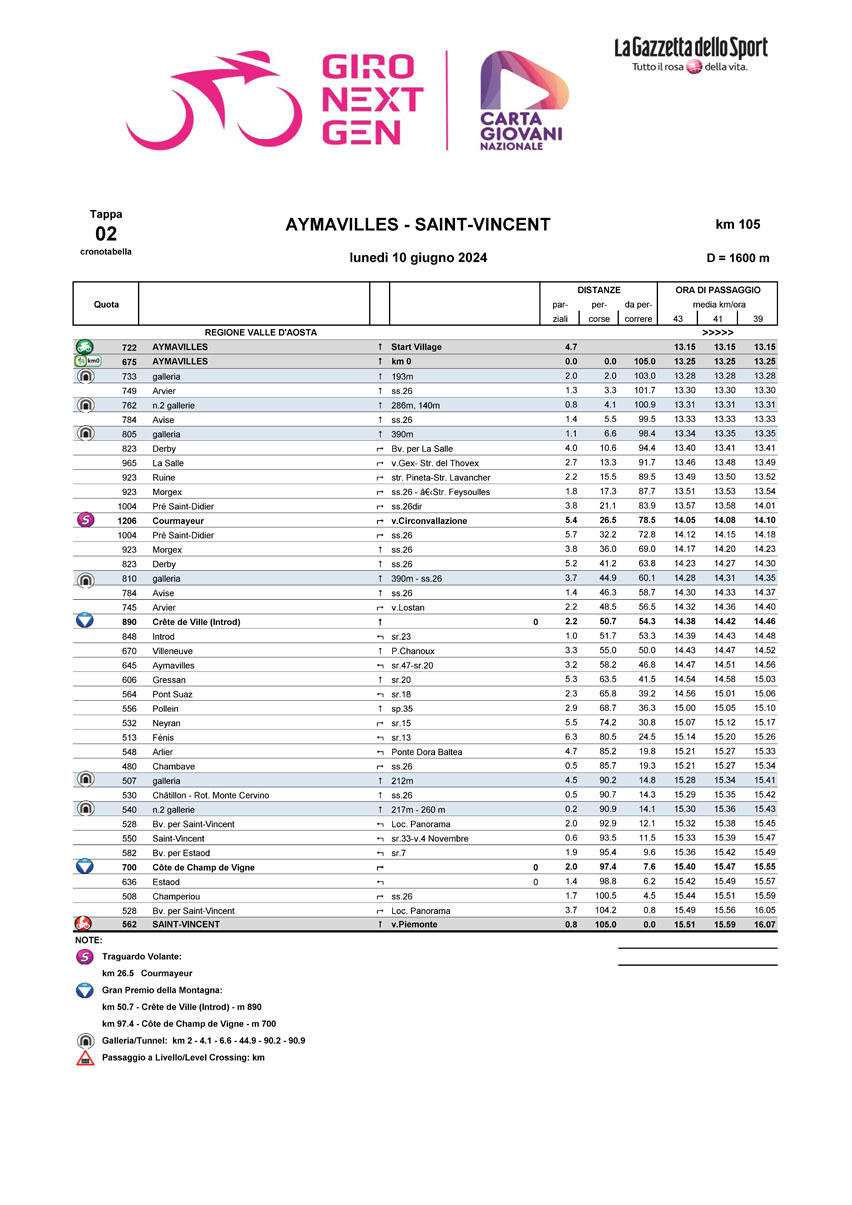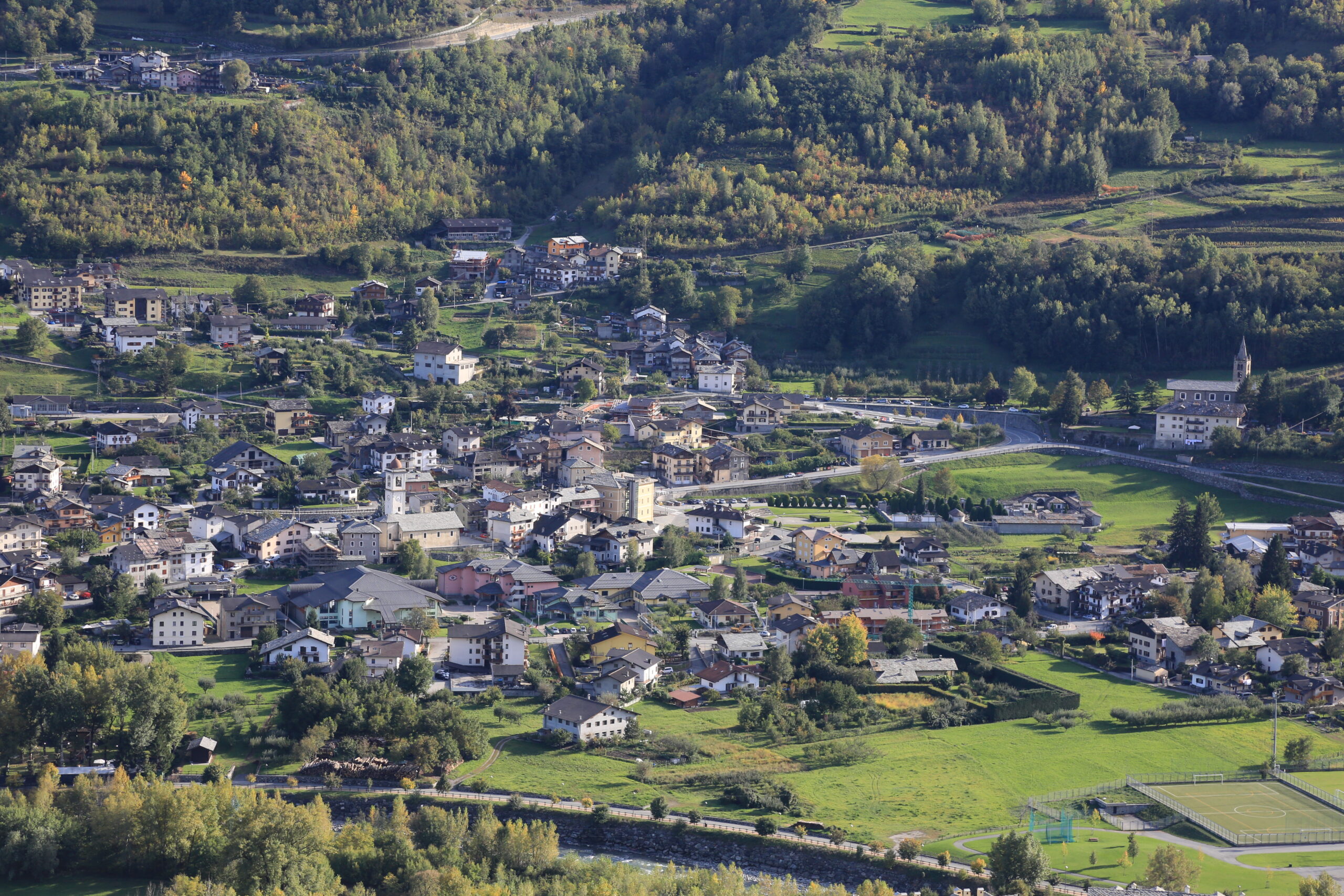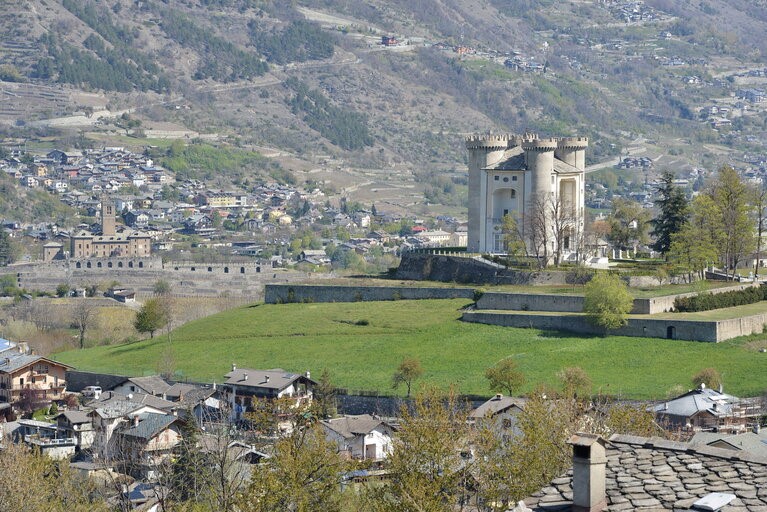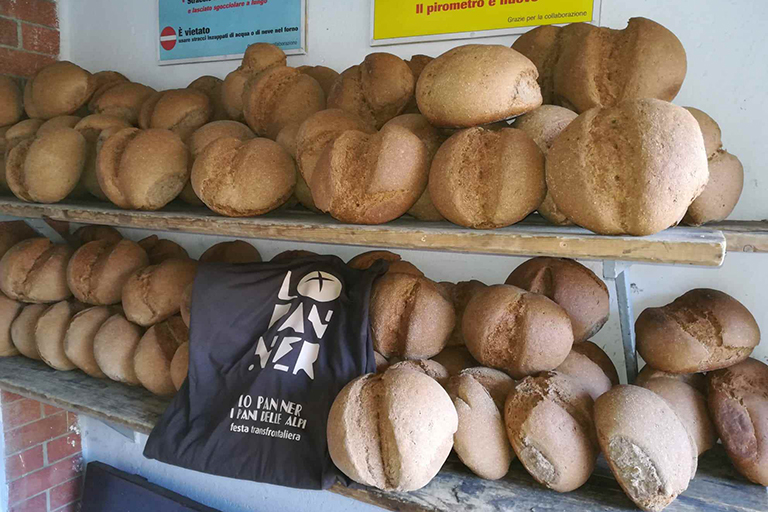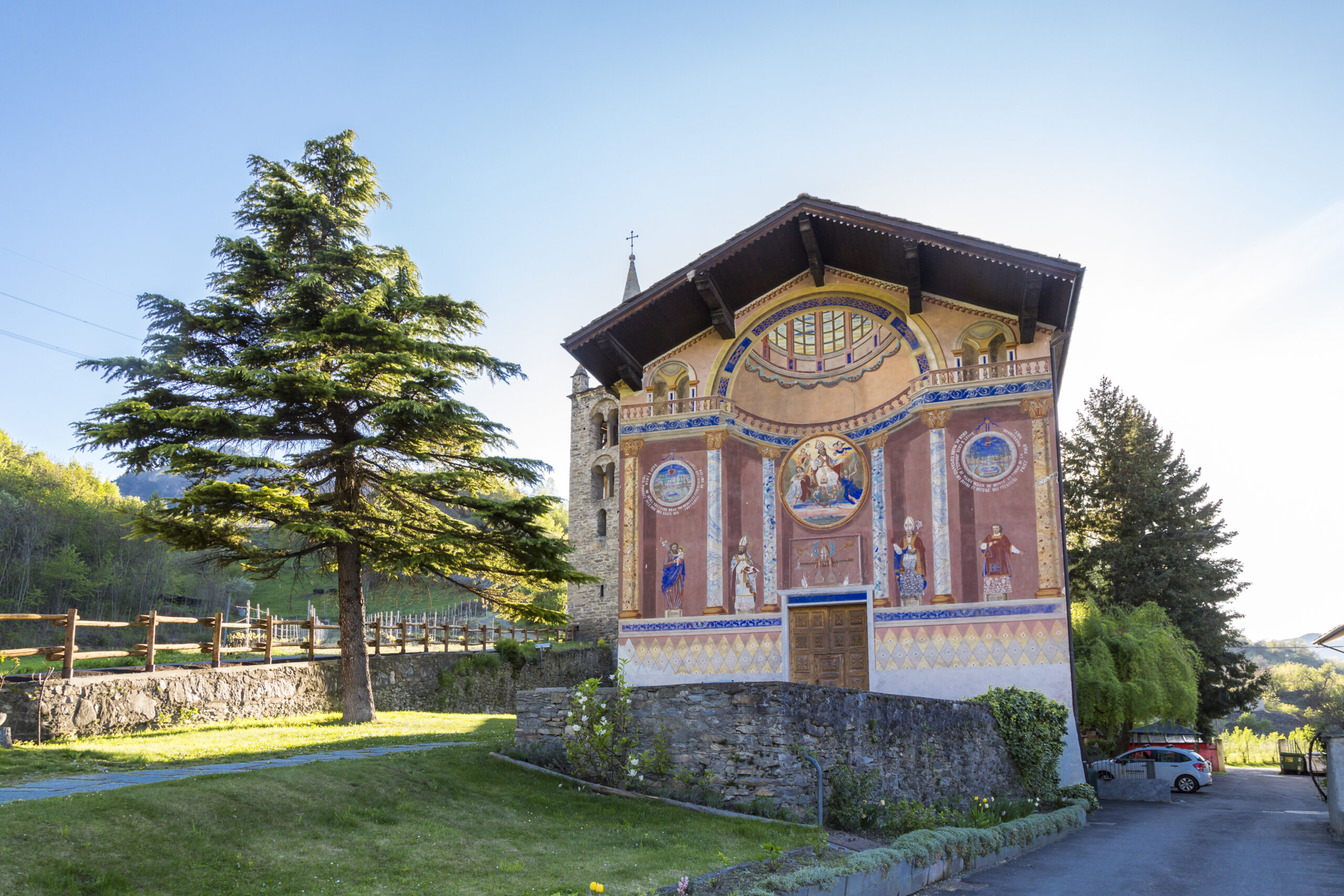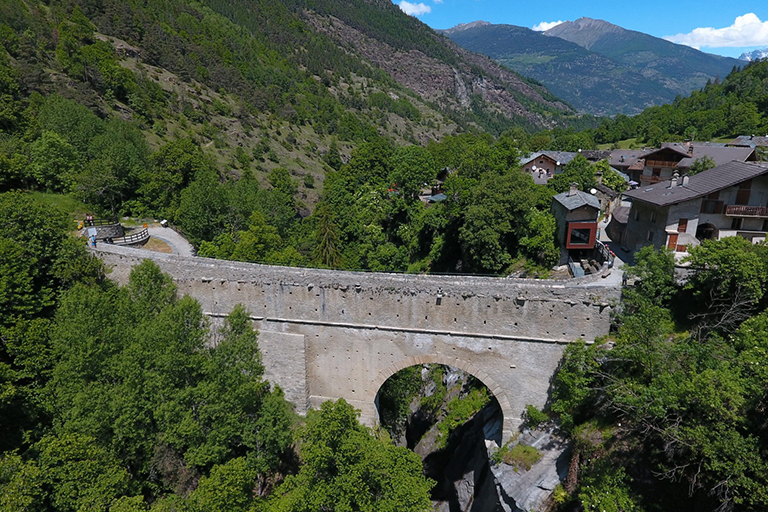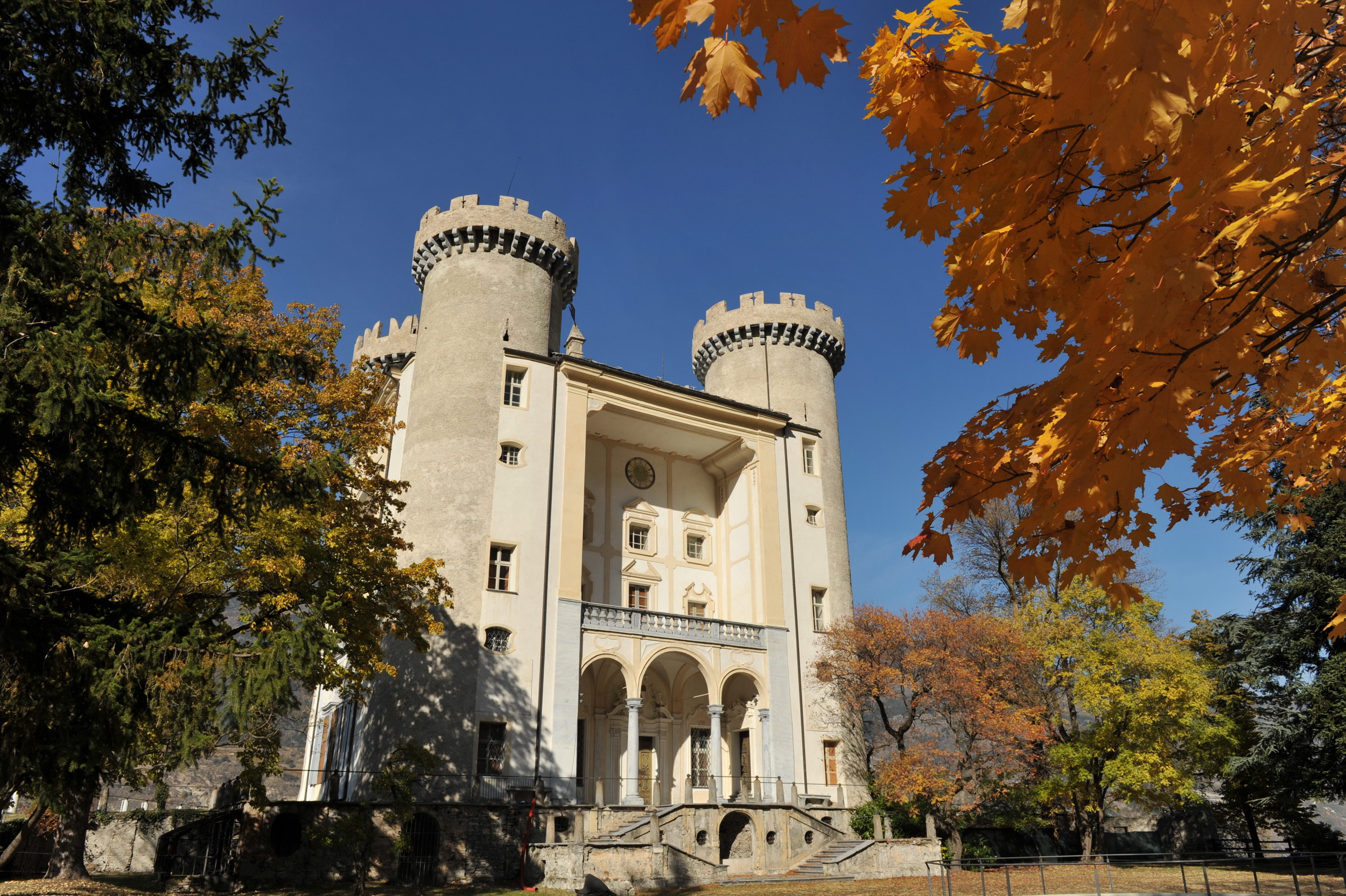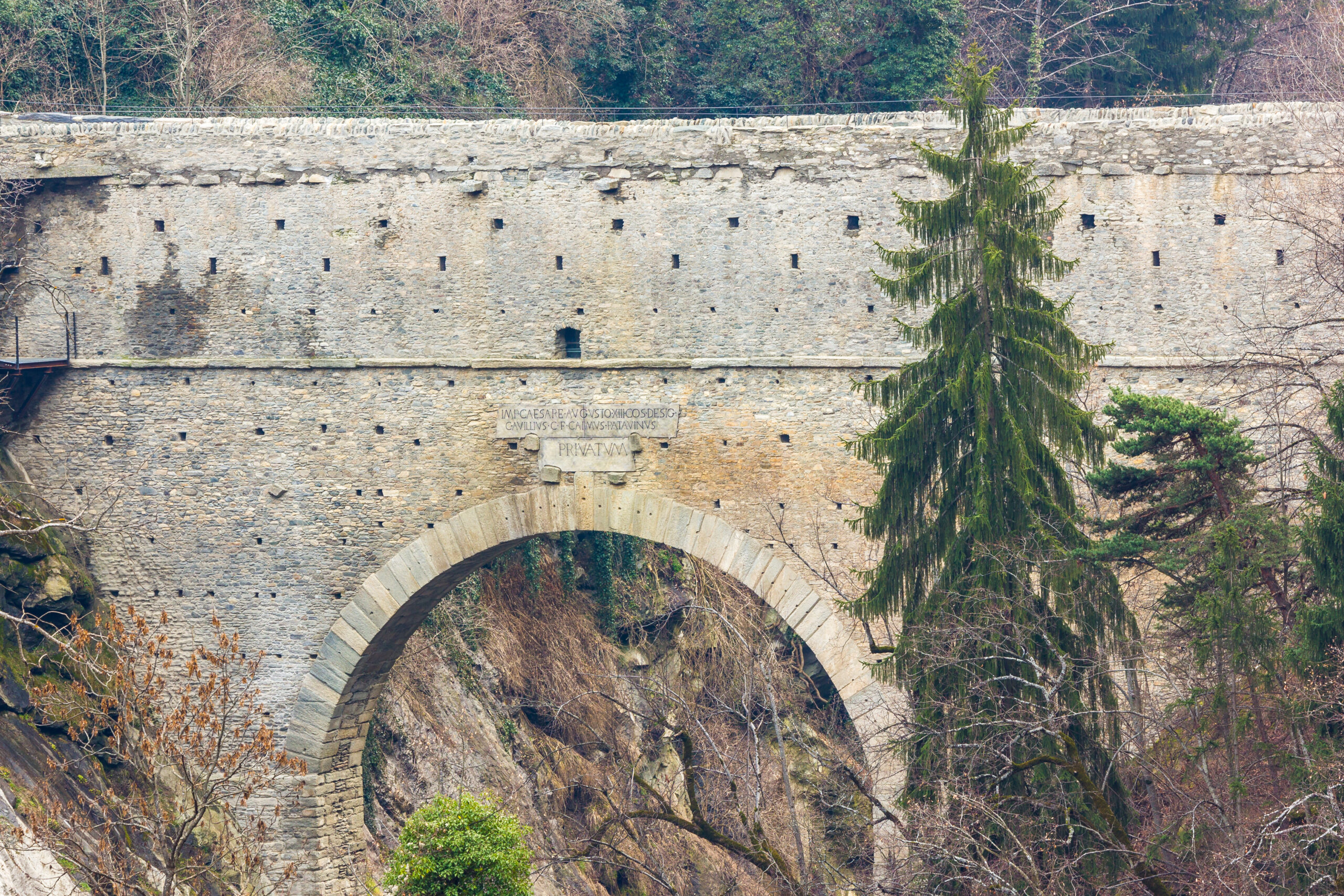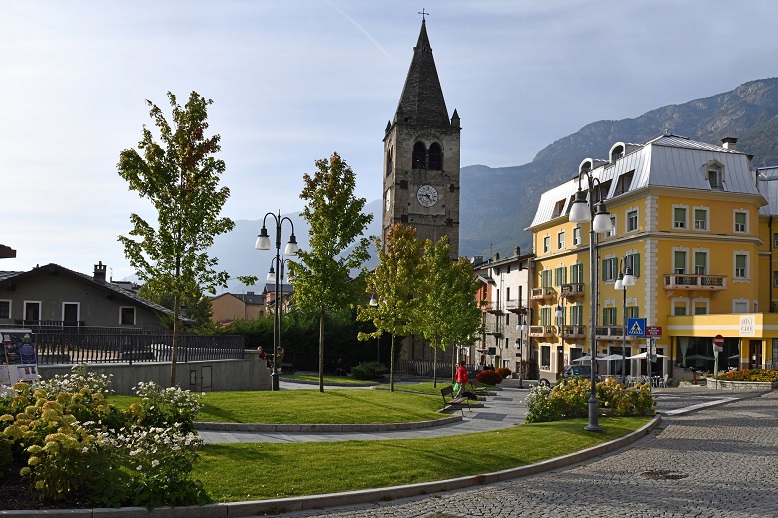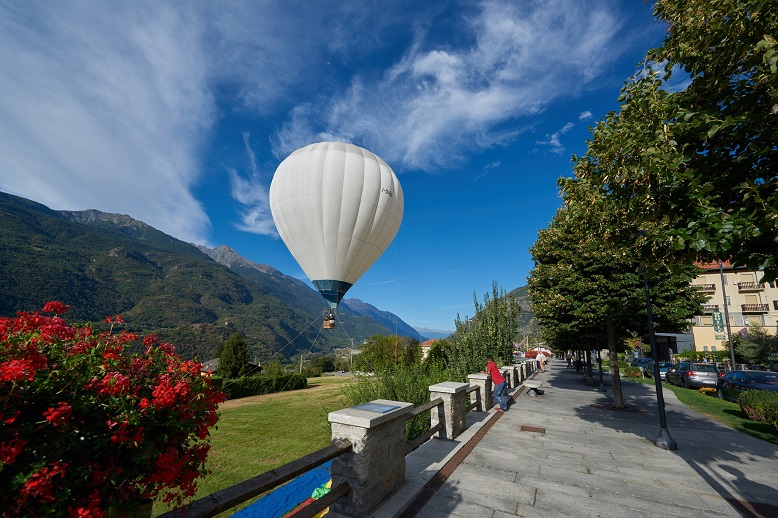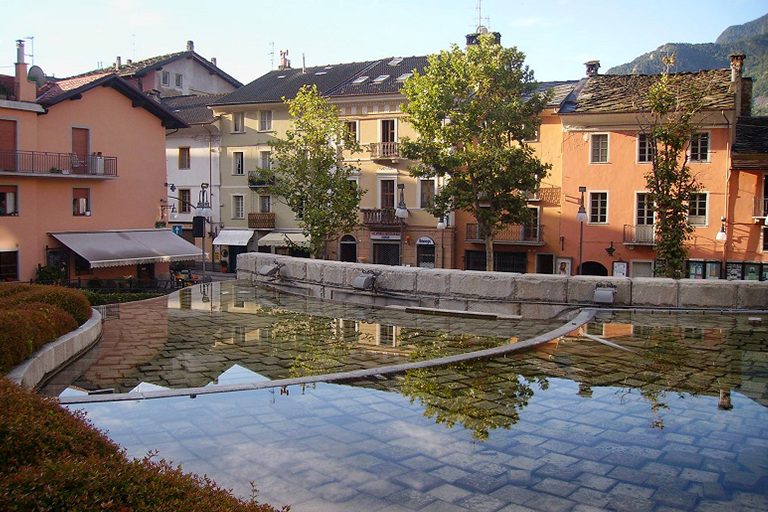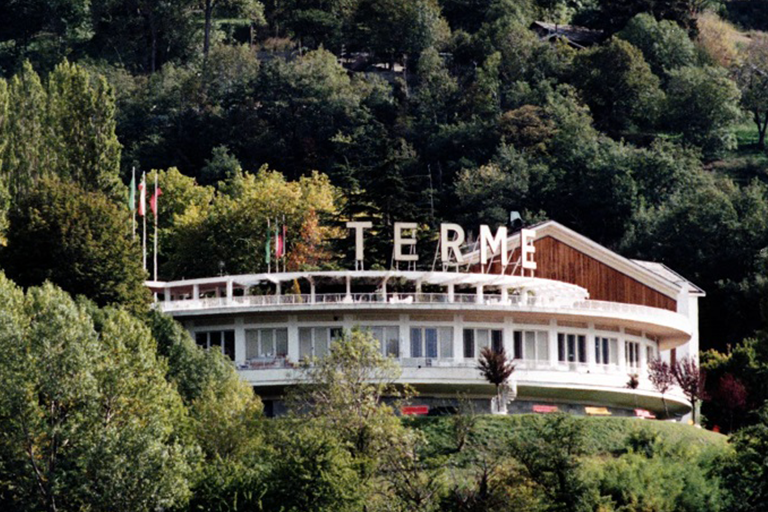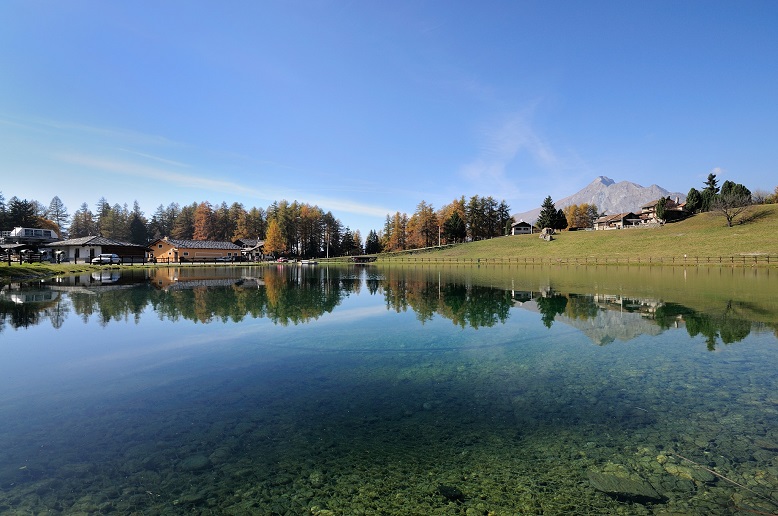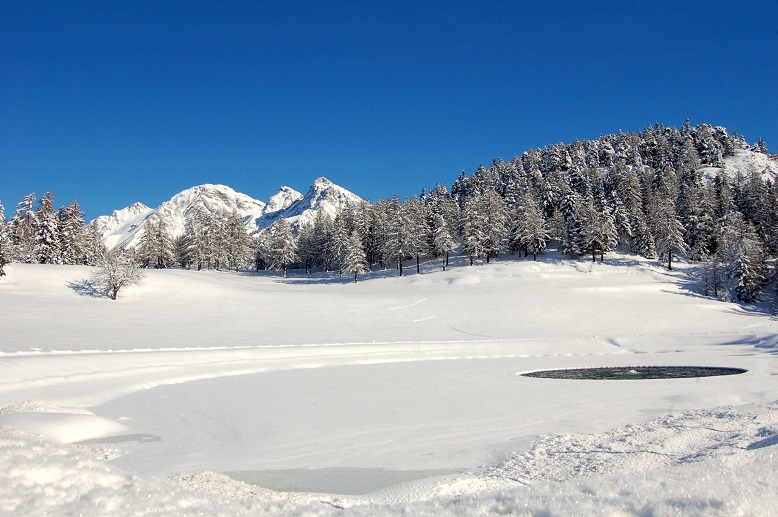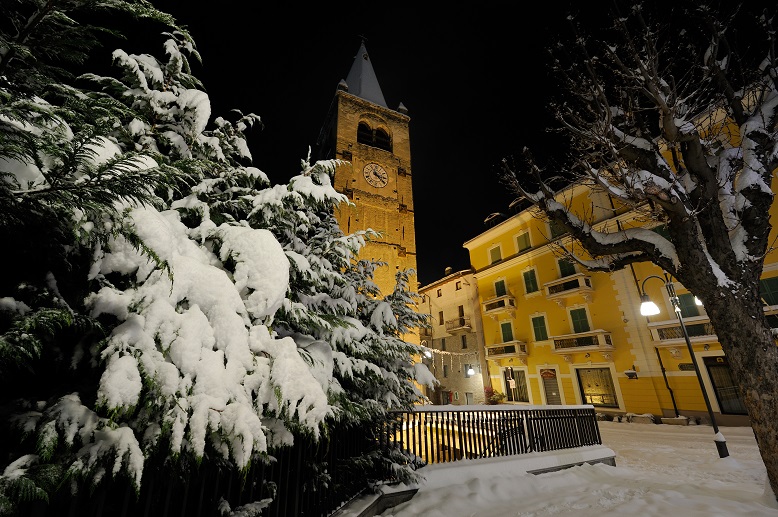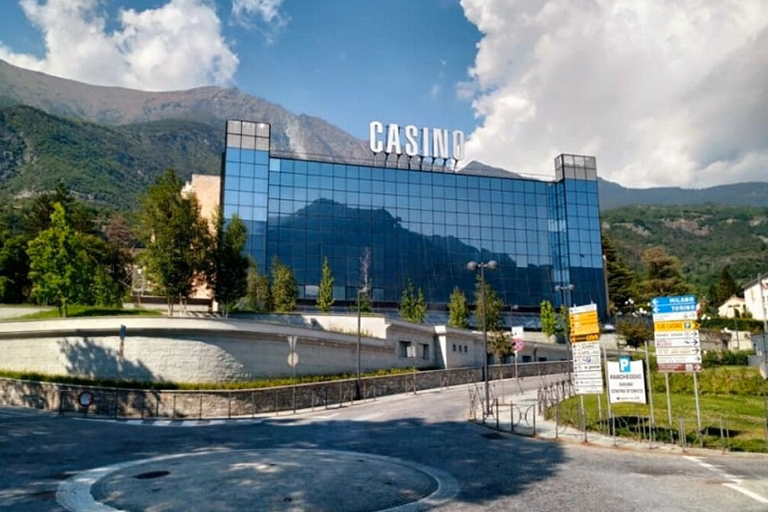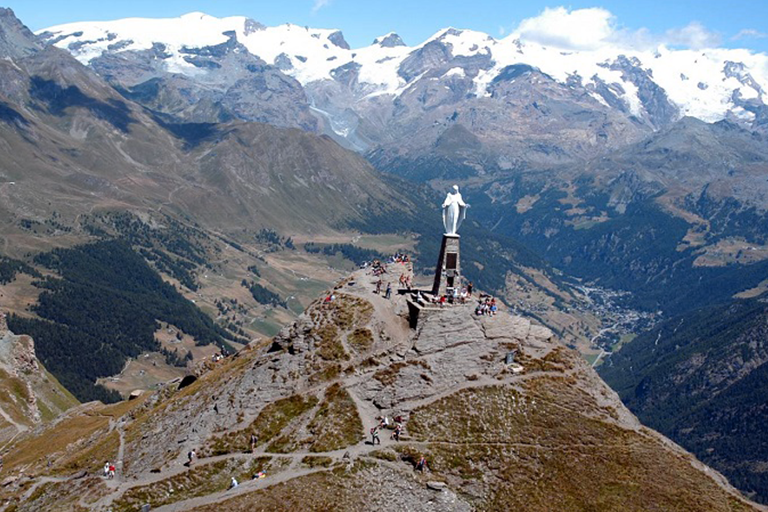learn more
technical info
profile
map
technical info
A rather rough stage despite the absence of long or very demanding climbs. The road climbs gradually to Courmayeur and then heads back to Aymavilles, tackling the first KOM of the day after Arvier. The peloton skirts the south bank of the Dora Baltea with continuous ups and downs and changes of direction. After an initial passage close to the finish area, the riders will climb to the Côte de Champ des Vignes at 8 km to go, before tackling the last descent and the short stretch leading to the finish.
Last kilometres
The last 3 km begin slightly downhill but the last kilometre is constantly uphill with a short 6% ramp ending about 250 m from the finish line. Final straight slightly uphill.
start / finish
final kilometres
itinerary timetable
tourist info
Host city:
Aymavilles
Overview
Aymavilles is rich in history and culture, immersed in the greenery of vineyards and orchards and dominated by the Grivola. Gateway to the Gran Paradiso National Park, 8 km from Aosta, it is the perfect base for excursions and an ideal place to stay in a rural context, where you can feel welcomed and find yourself as guests among ancient traditions and genuine flavours. Among the noteworthy cultural elements, the most obvious is the Castle, not forgetting the Roman Pont d’Ael aqueduct bridge built in 3 BC. In the capital are the churches of Saint-Martin and Saint-Léger, whose bell tower houses the oldest dated bell in the Valley and the crypt from the Romanesque period.
The moraine slopes are particularly suited to vine cultivation, which characterizes the entire landscape. Numerous routes cross the territory, allowing for pleasant walks. Above the wide wooded belt, pasture lands open up where the villages of Ozein, Turlin, Vieyes and Sylvenoire are located.
Food
Favò is the typical dish of the area, characteristic of the village of Ozein.
Its ingredients are typically alpine: pasta, fontina, black bread toasted in butter, sausage, bacon and broad beans. Favò is the star of the festival of the same name, held every year in the last week of July in Ozein to enhance this delicious dish. In 2020, the Favò recipe officially became part of the list of official recipes recognized by the “Accademia Italiana della Cucina” (an association that aims to protect the culinary traditions of the Bel Paese and promote and encourage their improvement in Italy and abroad).
Wines and Beverage
The morainic slopes of the area are particularly suited to vine cultivation, which characterises the entire landscape. A characteristic element is the “hillock” of Les Crêtes, which winds its way through the vineyards and from which one can admire, in a privileged position, the city of Aosta and some of the most beautiful castles in the region.
Numerous paths and farm roads cross the vineyards for pleasant walks, during which it is not uncommon to encounter farmers at work, bee hives, and cows grazing.
The importance of the municipality in the wine sector has allowed Aymaville to be included among the ” Città del Vino” for several years.
There are three main wine cellars in the area: the Cave Cooperative des Onze Communes, Les Crêtes and L’Atoueyo di Gerbelle Didier, which contribute to enhancing and promoting the winemaking tradition of Aymavilles.
Points of Interest
The parish church of Christ the King, also known as the church of Saint Martin, was one of the two parishes of Aymavilles, together with that of Saint-Léger, until their unification under the title of ‘Christ the King’ in 1926. Mentioned in a papal bull by Pope Alexander III dated 20 April 1176 among the dependencies of the Bishop of Aosta, the medieval church was rebuilt in 1724. On the façade, a 1968 fresco by Nino Pirlato depicts Christ between Saint Leodegary and Saint Martin.
The Church of Saint-Léger dates back, in its present form, to 1762. The religious historian Abbé Henry traces its origins back to the first settlement of the Benedictines in Aosta Valley and includes it among the 43 parishes that existed around 1800. The characteristic trompe l’œil façade painted in 1856-1857 by the painter Grange depicted the martyrdom of Saint Leodegarius, (Léger) with Saints Joseph, Germano, Grato and Leonard on the sides. The bell tower is from medieval times; on the belfry is the oldest dated bell in Aosta Valley: cast in 1372 and dedicated to the Virgin Mary. The Saint-Léger crypt is one of the oldest in Aosta Valley: its original part dates back to the last quarter of the 10th century.
The unique Aymavilles Castle concentrates the medieval and baroque styles in its exterior. Earliest evidence dates back to the 13th century: at that time, the building was a simple construction; in the 14th century, it passed into the hands of the most important noble family in Aosta Valley, the Challant, linked to the Savoy family. At the end of the 14th century, with Aimone di Challant, the Castle underwent notable transformations. The building served as a stately home, a defensive fortress, a place of representation and the centre of management of a significant agricultural plot. The creation of the terraced park and the construction of the steep driveway on the southern side, the staircase and the fountain gave the Castle the appearance of a modern lordly residence. In the 19th and 20th centuries, because of various property transfers, the Castle underwent many internal renovations linked to its use as a summer residence by families from Piedmont and Liguria.
The Roman aqueduct bridge at Pont-d’Ael, a grand opera of masonry and freestone blocks, is 56 m high above the level of the underlying watercourse and over 50 m long. The structure was designed with a double passage: the upper level, a conduit paved with large, squared-off lithic slabs and waterproofed with hydraulic mortar allowed the passage of water and a lower walkway about 1 metre wide and appropriately ventilated and illuminated allowed the passage of men and animals. An inscription on the north elevation dates the monument to the year 3 B.C. and attributes it to the entrepreneurial action of the Paduan Caius Avillius Caimus.
Saint-Vincent
Overview
Saint-Vincent, “The Riviera of the Alps”, is a true mountain jewel, enchanting visitors with its magical and relaxing atmosphere. On a warm summer evening, the main street of the town seems like a scene from a painting as it comes alive with a particular light from the gold and scarlet tinged twilight sky.
Evening life in Saint-Vincent is an explosion of vitality and joy. The stone-paved streets fill with festive voices, lively music and the sound of clinking glasses. Children run and laugh while adults engage in animated conversation. In the square, entertainment shows attract the public’s attention and applause. Elegantly dressed visitors head to the famous Casino, while others prefer to relax and enjoy the benefits of the local spa, renowned for it’s regenerative properties.
Food
Through taste, the typical products of the Aosta Valley tell the story of an alpine land and its identity. Aosta Valley gastronomic tradition is a tale of unique flavours, inimitable fruit of a special geographical location, quality prime materials and ancient production techniques. Standing out among the many specialities of the Aosta Valley are those that have obtained the certification “Protected Designation of Origin” (DOP): Fontina, Aosta Valley Fromadzo, Jambon de Bosses and Aosta Valley Lard from Arnad. These products represent the excellence of dairy and meat delicatessen traditions of the region, through the use of high quality milk and meats and processing methods passed down from generation to generation.
As well as the DOP cheeses and cured meats, the Aosta Valley offers a rich variety of other gastronomic products. Among the cured meats, Boudin, Saouseusse, Motzetta, Teteun and grilled Jambon of Saint-Oyen are highly appreciated. Among the cheeses, brossa, Toma from Gressoney, salignon, reblec and seras merit a mention. Every product has its own story and its own distinctive taste, which reflect the territory and local traditions. These cheeses and cured meats are often accompanied by local fruit and nuts, which add further richness and variety to Aosta Valley dishes.
Fruit cultivated in the Aosta Valley is another territorial excellence. The Renetta apple is the symbol of Aosta Valley fruit tradition and the “Golden Delicious” is appreciated for it’s juicy and sugary pulp. The Aosta Valley chestnut is a product of small dimension but great quality. Aosta Valley honey, worked in the old way without heat treatment, maintains its organoleptic properties unaltered. Lastly, the deserts and biscuits typical of the Aostan valleys, like the tegole and the torcetti from Saint-Vincent, complete this rich gastronomic panorama, offering an irresistible sweet touch.
Wines and Beverage
Nothing is lacking in the Aosta Valley, especially when it comes to wine. This region offers a wide range of wines from whites to rosés to reds to late harvests to bubbles. The vines are cultivated on terraces sustained by dry stone walls, an element which characterises the landscape in an unmistakable way. Observing the vineyards, which seem to climb up the steep slopes of the mountains, you immediately appreciate the reason for the attribute “heroic viticulture”. Several agricultural companies offer wine-based experiences, among which tastings, guided cellar tours and vineyard trekking, allowing visitors to emerse themselves in the wine world of the Aosta Valley.
In addition to wine, the Aosta Valley is renowned for its grappas distilled from the precious pomace, its distillates and its bitters obtained from alpine herbs that flourish at high altitudes. Noted for their therapeutic properties, these include special essences such as artemisia glacialis and artemisia weber, base components of Genepi (once known as génépy), the famous Aosta Valley liqueur. Its greenish yellow chromatic appearance, its balsamic scent and its full and bitterish taste derive precisely from the characteristics of the plants which are collected sparingly from the moraines of the glaciers and then selected and dried with painstaking meticulousness. Water is another essential element of mountain life and the Aosta Valley is famous for its pure and pristine waters. The Monte Bianco Society was founded in 1967 and since then it has produced and marketed waters orginating from the sources of Mont Blanc. These waters, controlled and rich in goodness, are a symbol of the uncontaminated environment of the Region. The motto “Bevi sano, bevi valdostano” (“drink healthy, drink from the Aosta Valley”) reflects the strong bond between the company and its territory, underlining the importance of conscious and environmentally friendly consumption.
Punti d'Interesse
Saint-Vincent is the ideal starting point for exploring the Central Valley, a land of rare beauty where your gaze is lost between bold manors and fascinating fortresses, characterised by towers and legends.
- The Casino – Roulette, blackjack, poker are just a few of the games that can be found in the elegant, glittering rooms of the Casinò di Saint-Vincent, flagship of Europe’s gaming houses.
- Saint-Vincent Spa – Immerse yourself in the thermal waters of Saint-Vincent’s spa, a warm, relaxing caress where you can enjoy bubbling jacuzzis, regenerating water jets and panoramic terraces.
- Col de Joux – The scenic border that separates the Ayas Valley from Saint-Vincent is a triumph of beautiful forests and stunning pastures from which your gaze extends to embrace the turquoise waters of the Dora Baltea river and the jagged heights of Mont Blanc. Amidst immortal fir trees and tapered larches, make an adventurous excursion to the surrounding hills or take a pleasant stroll between picturesque hamlets and periwinkle-coloured lakes. In the summer season this mountain pass is a maze of paths to discover by bike, while in winter it transforms into a snowy paradise.
- Mount Zerbion – When your eyes take in the snowy peaks of the Matterhorn, Monte Rosa, Mont Blanc and the Gran Paradiso, you will feel like you are on the top of the world. A rush of adrenalin will sweep through you the moment your gaze falls on the infinite expanses of the Ayas Valley and the distant profile of the Central Valley with its villages, narrow streets and glistening lakes. There are many ways to reach the unbeatable viewpoint of the peak of Monte Zerbion, populated by solemn ibex and protected by a silent, sacred guardian.
- Ussel Castle – Like a red kite, perched on a wooded nest of rocks and bushes, its walls still echo the footsteps of the guards, the cries of the lookouts and the clanking of the prisoners’ chains…
- Fénis Castle – With its crenelated walls, its guard walkways, its soaring towers and its frescoes which tell of dragons and princesses, it’s the most visited castle of the Aosta Valley. If you are looking for a fairytale place, you’ve just found it!
- Saint-Barthélemy Astronomical Observatory – Join the exciting quest to unravel the mysteries of the universe: take a guided visit to understand and observe elusive constellations, giant planets and twinkling stars.
- The village of Chamois: A Village in the Clouds – It is the highest municipality in the Aosta Valley: an enchanting place, totally immersed in nature. An example of environmental sustainability and active mobility, it is only reachable by foot or by cable car.
Videos Stage 02
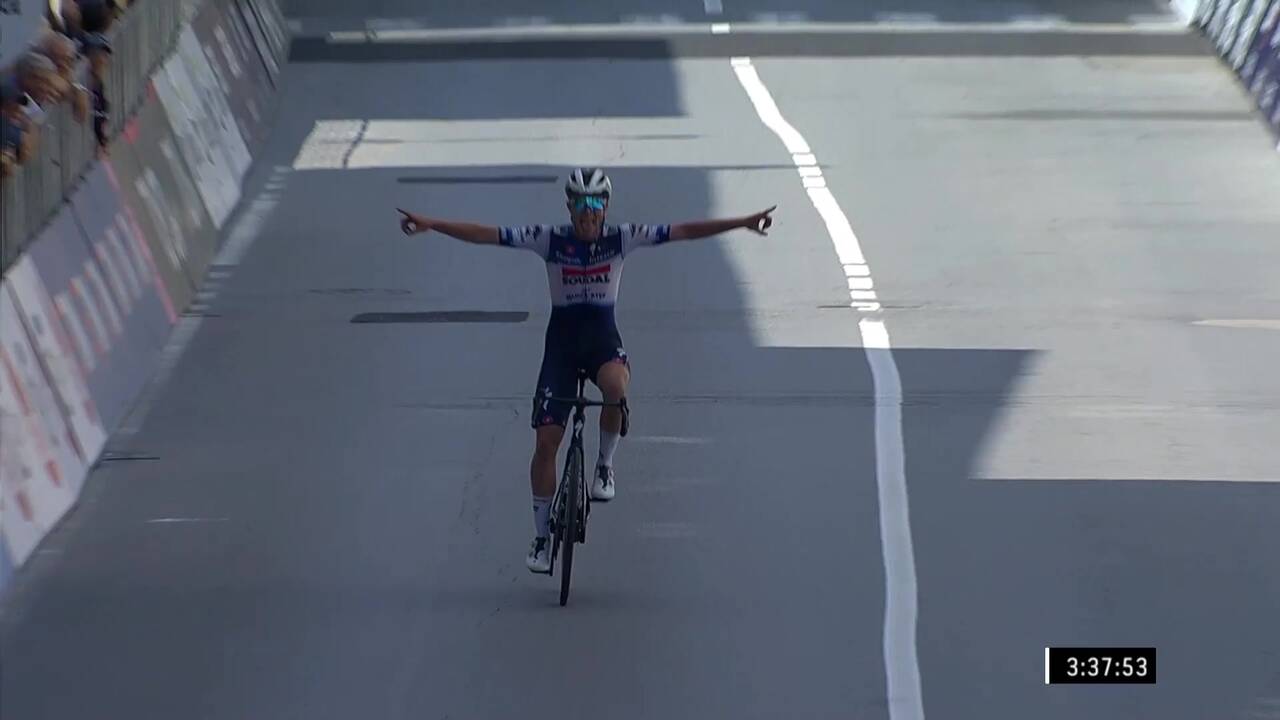
Giro Next Gen 2023 | Stage 2 | Last KM
12 Jun 2023
Giro Next Gen 2023 | Stage 2 | Highlights
12 Jun 2023

